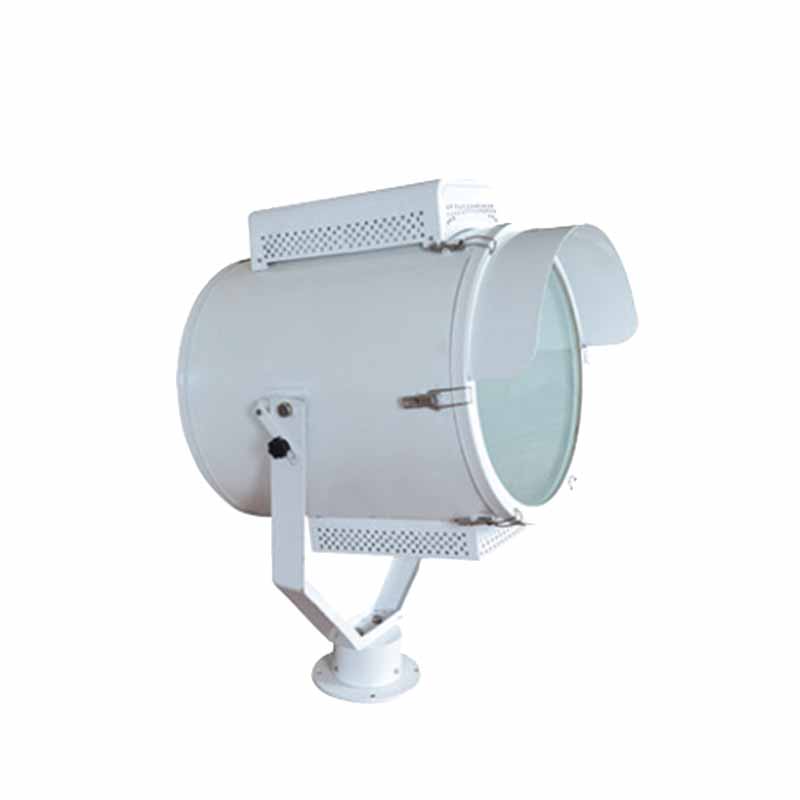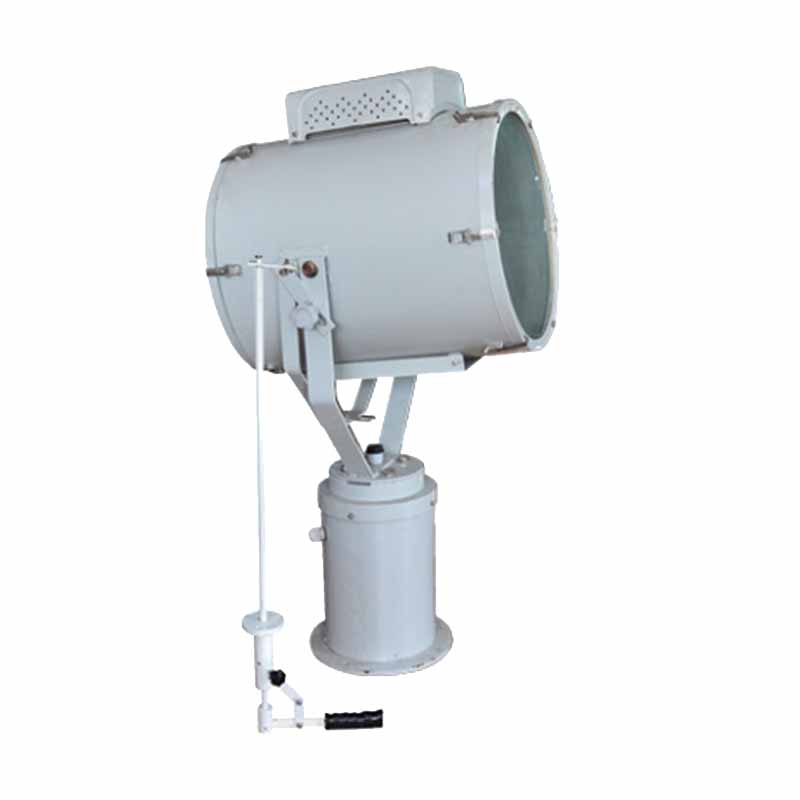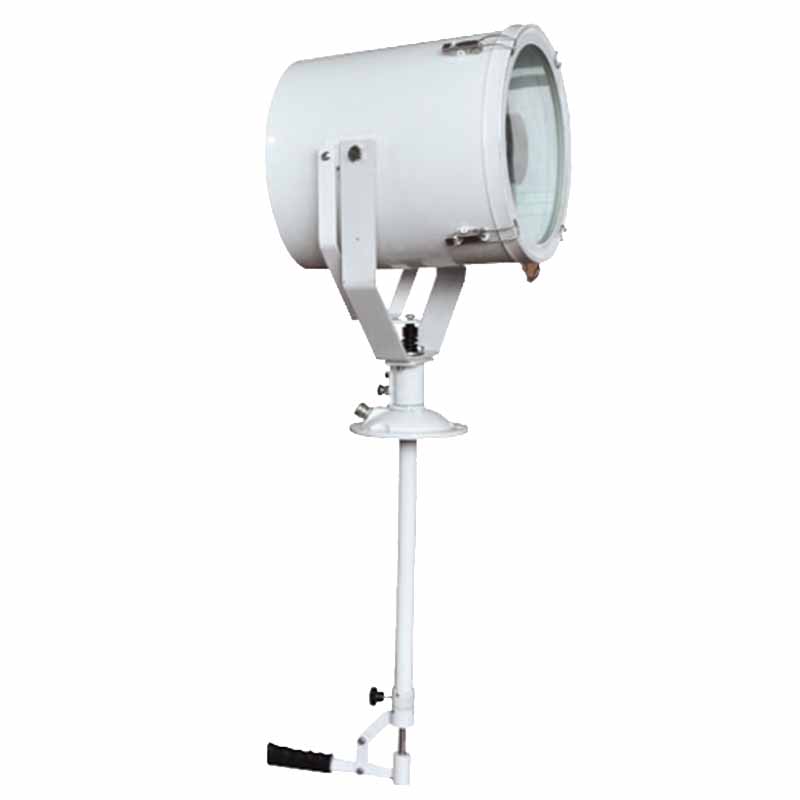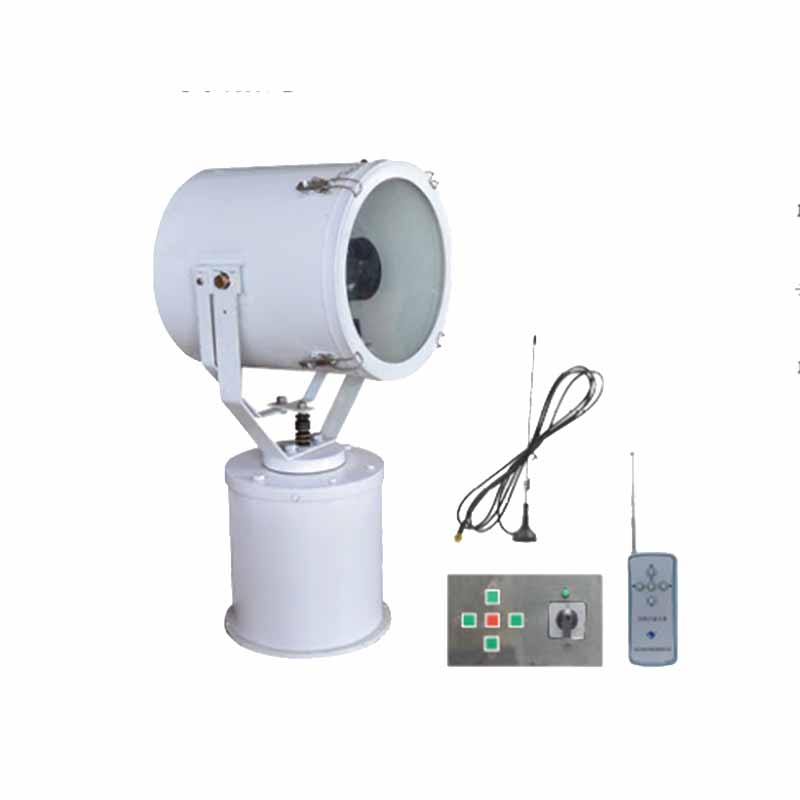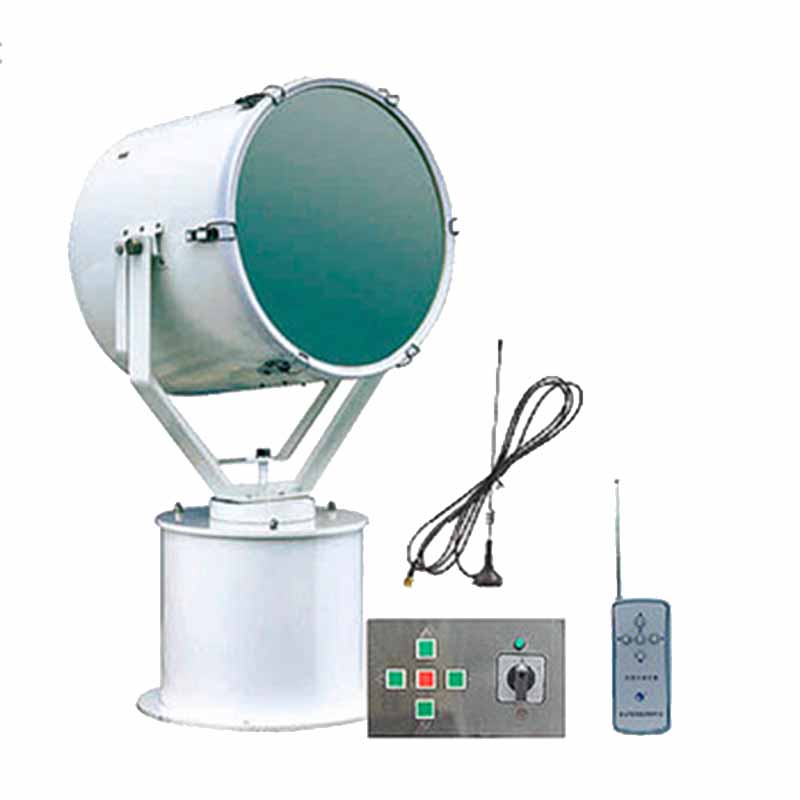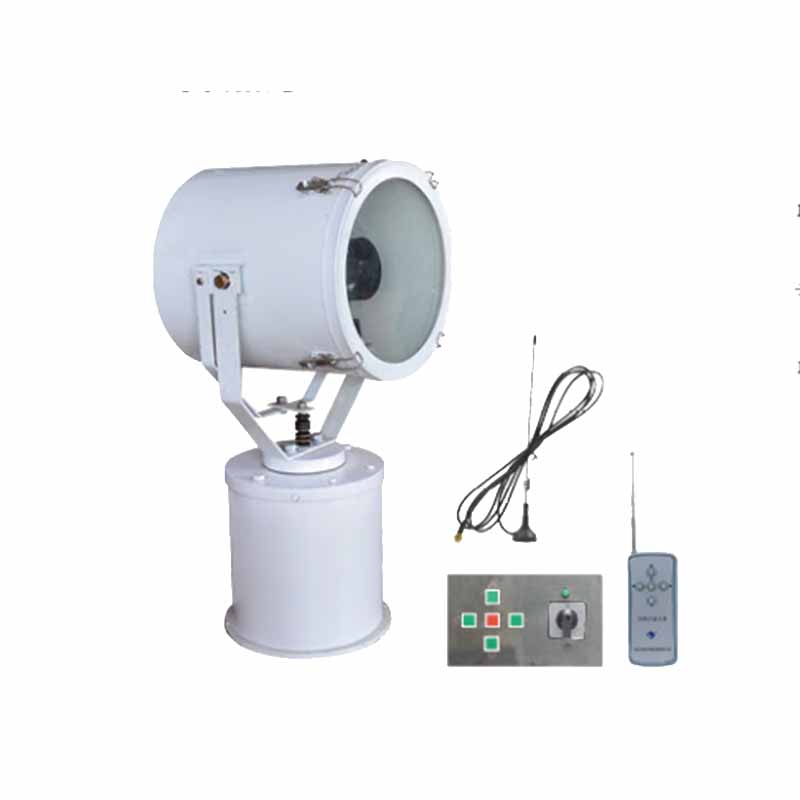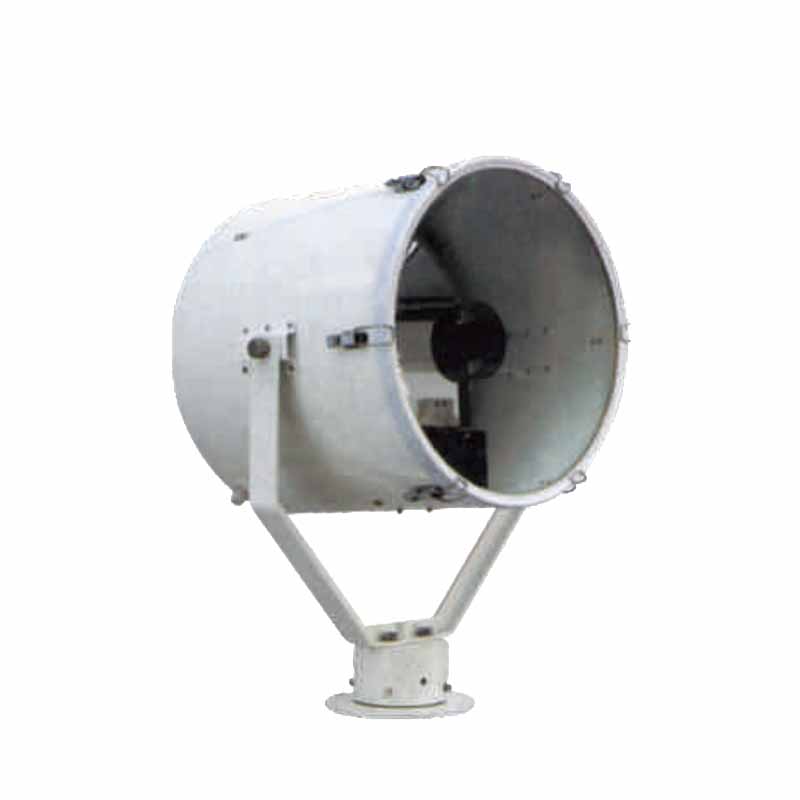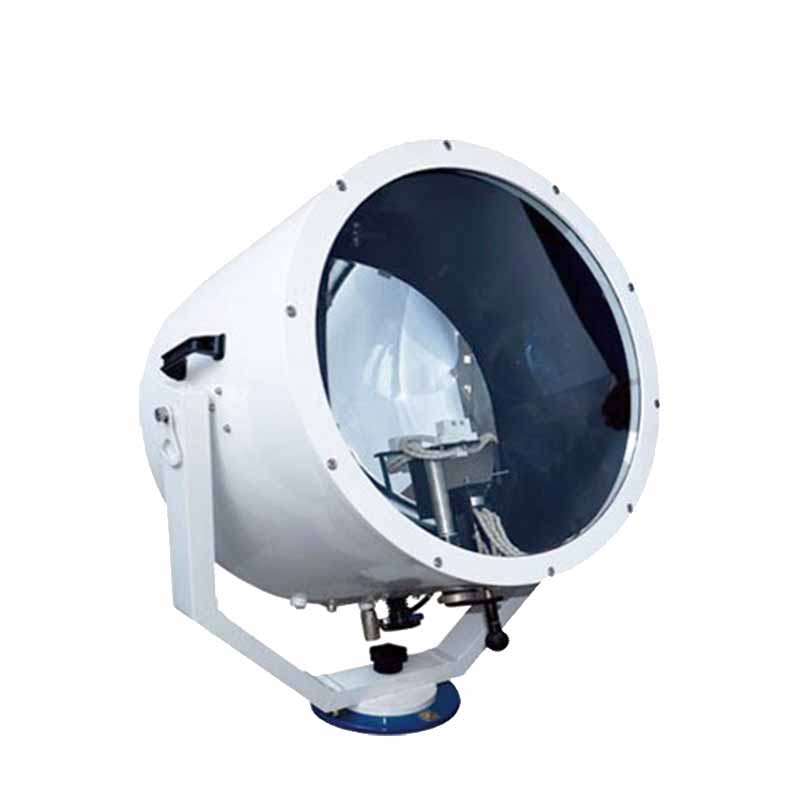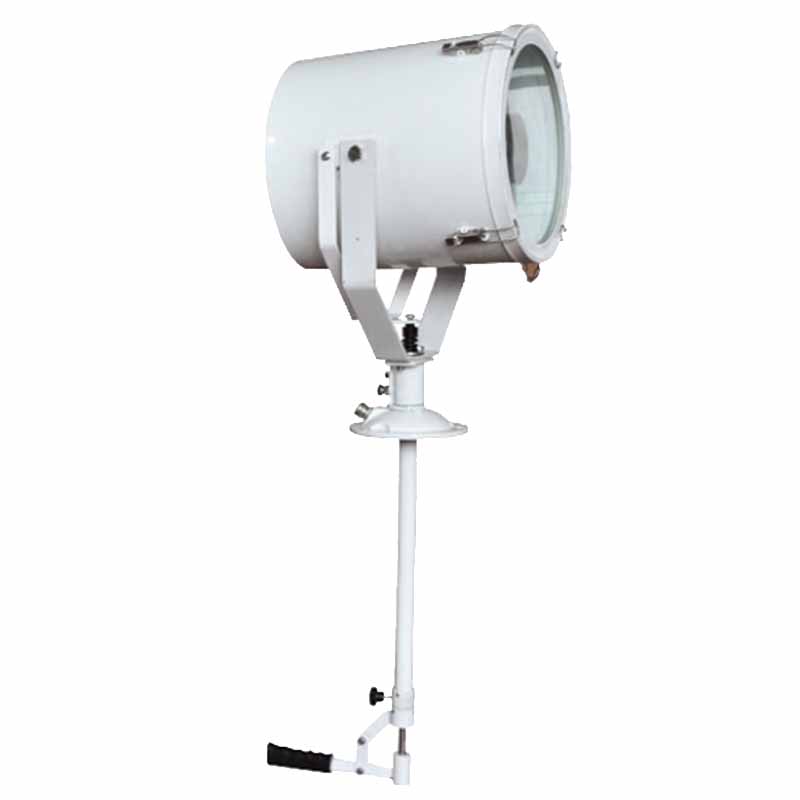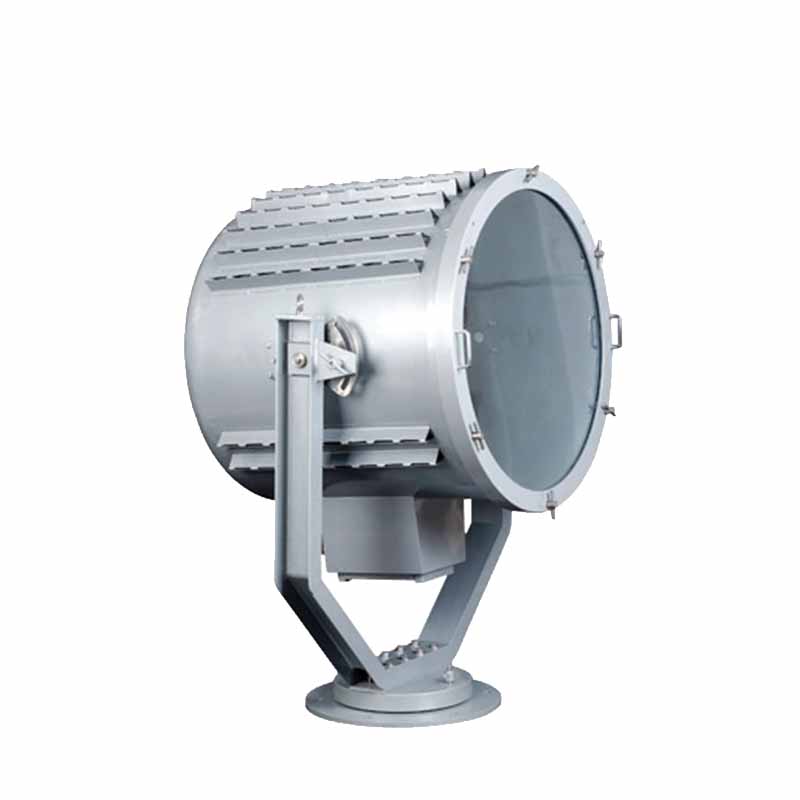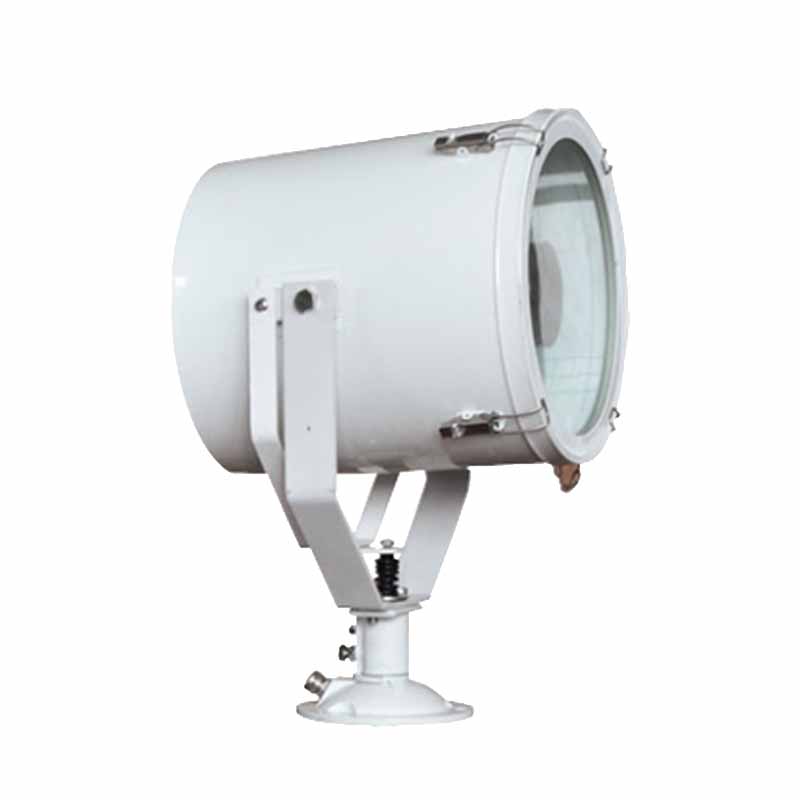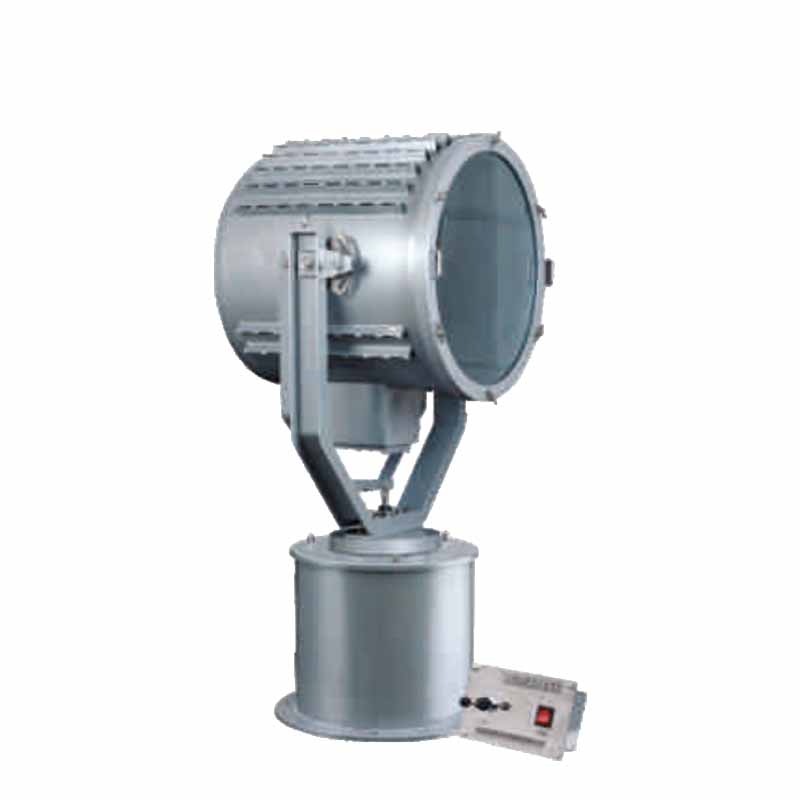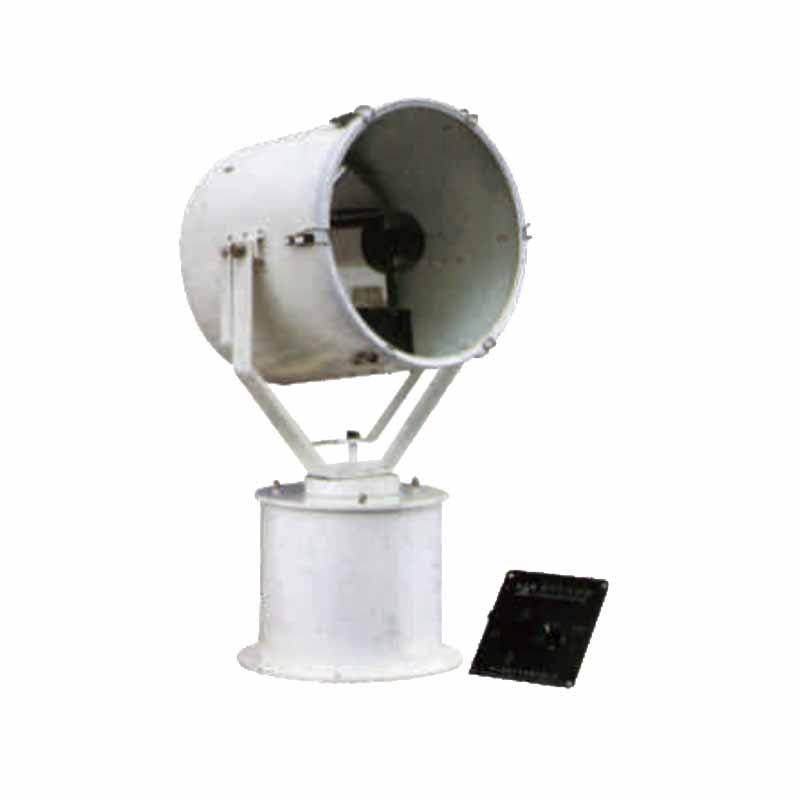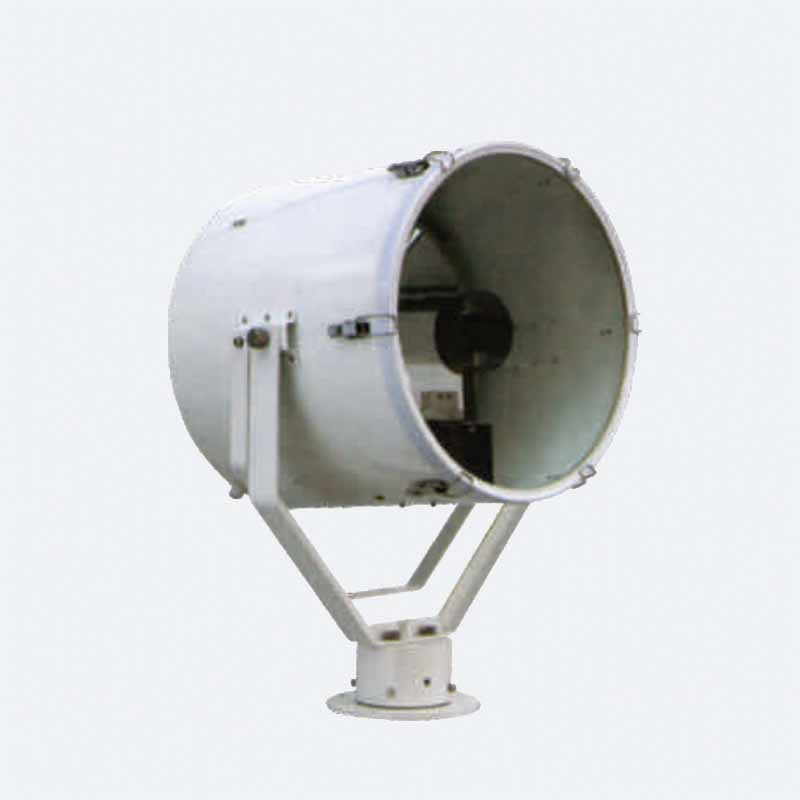Marine searchlights are lamps that use reflectors to concentrate the emitted beams in a small solid angle to obtain greater light intensity.
Marine searchlights use reflectors or lenses to concentrate the emitted light beams in a small solid angle (generally less than 2 degrees), so as to obtain greater light intensity. About 1870, the first carbon arc light appeared in the world Searchlight for the light source..
Marine searchlights generally use mercury-xenon light sources as the main source, but the lamps are bulky and heavy, making installation and operation difficult. In recent years, security searchlights with metal halide light sources have appeared on the market. Due to their small size, light weight, and high luminous efficiency (the luminous flux of a 575-watt metal halide bulb is as high as 49,000LM), they have a long range and are used in places such as navigation, ships, and yachts. has been more and more widely used.
As a special lighting device, the searchlight used to be very useful and important at night. It is mainly used for long-distance lighting and searching. Many people may not understand it. Then the principle structure of the searchlight is What?
According to the optical properties of the parabolic reflector, the light emitted by the point light source placed on the focal point of the parabolic surface will form a parallel beam parallel to the optical axis of the parabolic surface after being reflected by the parabolic surface. Virtually all light sources have a certain volume. However, because the reflectors of high-power searchlights have a large diameter, the diameter is close to 1m or more, so relatively speaking, the diffusion of reflected light caused by the volume of the light source is small, and the luminous flux emitted by the searchlight is concentrated in a small solid angle. According to the basic concept of photometry, a certain amount of luminous flux is concentrated in a small solid angle, which will inevitably produce a huge luminous intensity. The axial light intensity of a large searchlight reaches hundreds of millions of candela, and the projection distance can reach 200km. This is how searchlights can illuminate distant targets.
The searchlight is composed of a light source and a reflector, and generally includes one or more optical lenses in its front section. The light is first gathered into a beam by a reflector (curved mirror or spherical mirror), then controlled by the position and combination of the optical lens, and finally projected out.
When the ship is sailing at night or doing work at night, it needs some strong light for long-distance lighting and strong lighting. Searchlights are usually used for long-distance lighting, and the luminous flux is concentrated in a very small subject angle by optical devices such as lenses or reflectors.
Searchlights are used to illuminate the two banks when passing through narrow waterways, inland rivers and canals, and at the same time can be used for long-distance light signal communication. This kind of searchlight is called a signal searchlight.
Strong lighting can use floodlights, which can distribute the luminous flux in a relatively large subject angle, and the light intensity is very large.
The searchlights and floodlights installed outdoors are powered by the main switchboard and controlled by the cab.
Searchlight detection standard
GB/T 24954-2010 Ships and marine technology Searchlights for high-speed ships
GB 4124.4-1984 Marine searchlight types, parameters and main dimensions
DIN 14642-2018 Explosion-proof portable searchlights with mounting equipment for vehicles
KS V 4040-2013 Suez Canal Searchlight Davit
ANSI C136.32-2012 Road and area lighting equipment. Enclosed delayed luminaires and directional searchlights
DIN 14642-2011 Explosion-proof portable searchlights with mounting equipment for vehicles
CB/T 3852.4-2008 Types, parameters and main dimensions of marine lighting fixtures Part 4: Searchlights
KS V ISO 17884-2006 Ship and marine technology. Searchlights for speedboats
DIN 14642-2005 Explosion-proof portable searchlights with mounting equipment for vehicles
KS V 8469-2004 Searchlights for ships
BS ISO 17884-2004 Ships and marine technology. Navigation. Searchlights for speedboats
JIS F8459-2003 Shipbuilding. Searchlights


